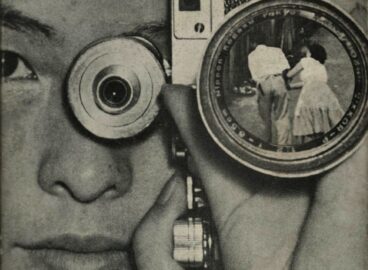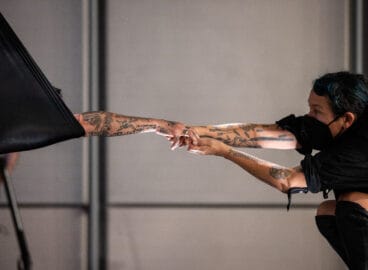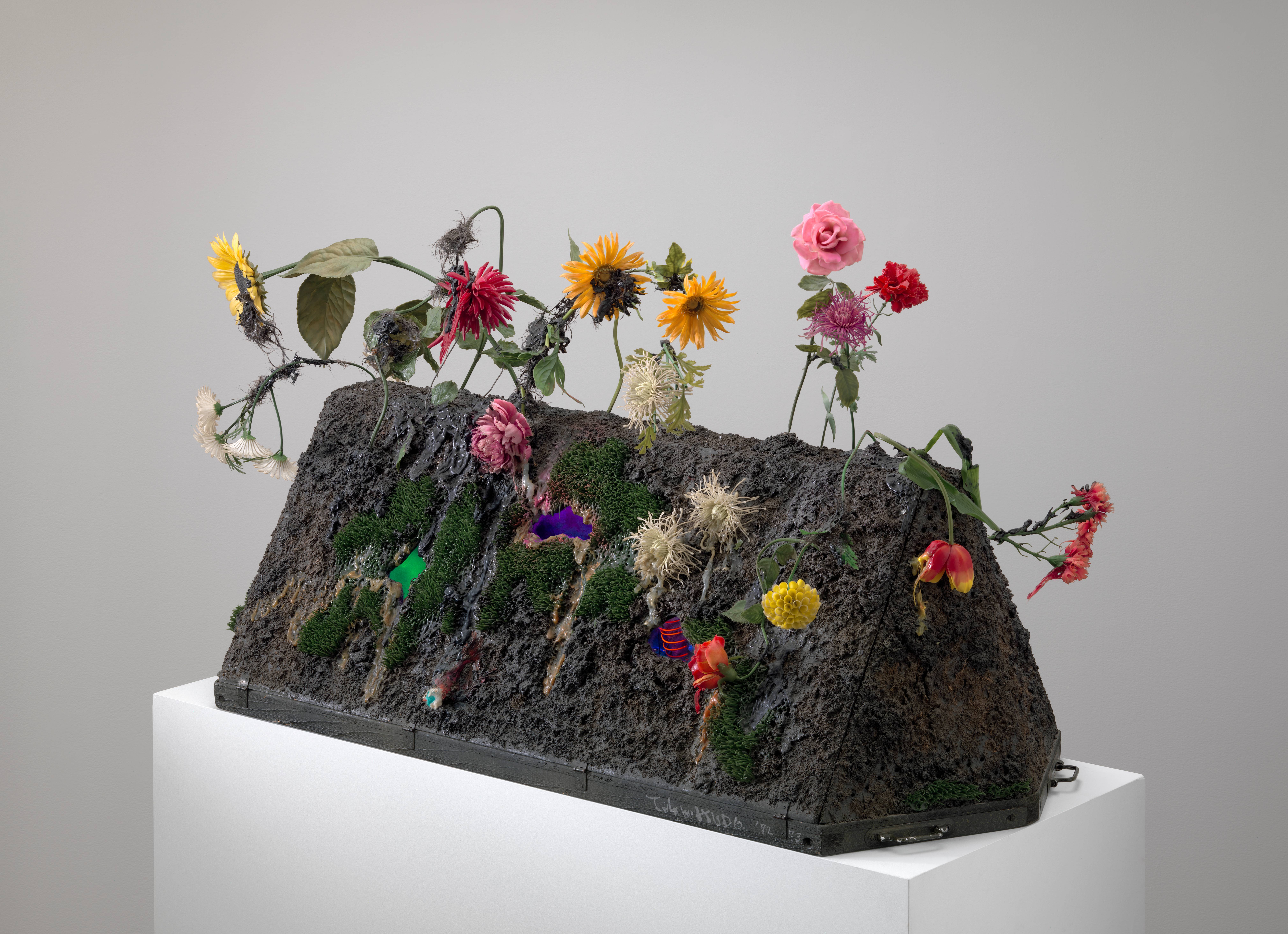The featured APN (Asahi Picture News) portfolios are comprised of modern photographic prints showing sculptures made in 1953 and 1954 by Yamaguchi Katsuhiro and Kitadai Shozo, members of the avant-garde collaborative Jikken Kobo (Experimental Workshop). Founded in Tokyo immediately after World War II, Jikken Kobo’s intermedia, cross-disciplinary works helped to foster the rebirth of the Japanese cultural avant-garde. The collaborative of fourteen visual artists, composers, performers, choreographers, sound engineers, and lighting designers began their public activities in 1951 with a ballet titled The Joy of Life, timed to coincide with Picasso’s first retrospective in Tokyo. The group, whose works combined art and technology, went on to produce stage productions, set and lighting design, costume design, slide shows, and music for modern dance and theater, often in collaboration with individuals outside the group. Jikken Kobo disbanded after seven years and remain relatively unknown outside Japan (especially in comparison to Gutai), but their activities are among the most pioneering in postwar Japanese art. Recent scholarship and interest in the group have shed new light on their important work.
From 1953 to 1954, Izawa Takumi, a young editor at the popular weekly magazine Asahi Graph (often compared to Life), commissioned artists to design images for publication in the magazine. The artists, who included the core members of Jikken Kobo, made sculptural environments incorporating the letters of the magazine’s English-language acronym, APN (Asahi Picture News). The sculptures were then photographed and published as lead images for the magazine’s featured columns. Asahi Graf assigned two photographers, Otsuji Kiyoji and Kitadai, to collaborate with other artists, including Yamaguchi, Komai Tetsuro, and Teshigahara Sofu, to produce photographs for the publication. The APN portfolios feature a selection from the images that were produced during this vital period and show objects made by Yamaguchi and Kitadai photographed by Otsuji and Kitadai. The photographs are experimental in nature, radical in their composition, and bear the formal hallmarks of the artists’ works in other media. They represent some of the most interesting avant-garde accomplishments in postwar Japan.
Yamaguchi, one of Jikken Kobo’s co-founders, likened the workshop to “Bauhaus without a building” He was particularly influenced by Bauhaus teacher László Moholy-Nagy’s seminal publication The New Vision, but the group also took inspiration from pre-war European and American movements such as Constructivism, Cubism, and Surrealism, as well as from John Cage’s compositions, Martha Graham’s choreography, and Alexander Calder’s mobiles. Although influenced by the Western avant-garde, Jikken Kobo incorporated new technologies to create signature works relating to the specific conditions of 1950s Japan, which was undergoing rapid industrialization and modernization.
The two APN portfolios, published by Tokyo Publishing House, were acquired by The Museum of Modern Art in 2011 as a direct result of curatorial travel to Japan through the C-MAP initiative. Since Jikken Kobo was primarily involved with stage productions, slide shows, and theater presentations, much of what they made was ephemeral or exists mostly in Japanese collections. These modern prints are a critical visual representation of the style of the group and bear witness to their multifaceted activities. MoMA has strong holdings of postwar Japanese photography due to the landmark exhibition New Japanese Photography, which was presented at the Museum in 1974. The show featured the work of luminaries such as Moriyama Daido, Tomatsu Shomei, and Hosoe Eikoh. The APN portfolios represent a different photographic tradition and are a vital link to the European avant-garde—the very foundation of MoMA’s collection.


